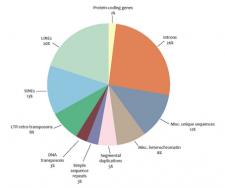ExAC Project Pins Down Rare Gene Variants
By Nature Editorial,
Nature Editorial
| 08. 17. 2016
More than one million people have now had their genome sequenced, or its protein-coding regions (the exome). The hope is that this information can be shared and linked to phenotype — specifically, disease — and improve medical care. An obstacle is that only a small fraction of these data are publicly available.
In an important step, we report this week the first publication from the Exome Aggregation Consortium (ExAC), which has generated the largest catalogue so far of variation in human protein-coding regions. It aggregates sequence data from some 60,000 people. Most importantly, it puts the information in a publicly accessible database that is already a crucial resource (http://exac.broadinstitute.org).
There are challenges in sharing such data sets — the project scientists deserve credit for making this one open access. Its scale offers insight into rare genetic variation across populations. It identifies more than 7.4 million (mostly new) variants at high confidence, and documents rare mutations that independently emerged, providing the first estimate of the frequency of their recurrence. And it finds 3,230 genes that show nearly no cases of...
Related Articles
By Tamsin Metelerkamp, Daily Maverick | 11.18.2024
The National Health Research Ethics Council (NHREC) has confirmed that heritable human genome editing (HHGE) remains illegal in South Africa, after changes in the latest version of the South African Ethics in Health Research Guidelines sparked concern among researchers that...
By Bernice Lottering, Gene Online | 11.08.2024
South Africa’s updated health-research ethics guidelines, which now include heritable human genome editing, have sparked concern among scientists. The revisions, made in May but only recently gaining attention, outline protocols for modifying genetic material in sperm, eggs, or embryos—changes that...
By Arwa Mahdawi, The Guardian | 11.19.2024
Photo "Elon Musk Presenting Tesla's Fully Autonomous Future" by Steve Jurvetson on Flickr (CC BY-NC-SA 2.0)
Is Elon Musk the dinner party guest from hell? It sure seems that way. Not only is the man desperate for people to...
By Ewan Bolton, The Telegraph | 11.12.2024
Fertility agencies offering embryo selection for IVF and surrogacy have been accused of promoting eugenics and misleading consumers about the power of genetic screening.
Some American clinics claim they can “rank” embryos for IVF using Preimplantation Genetic Testing for Polygenic...




